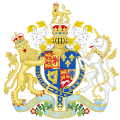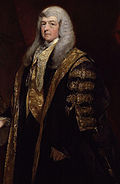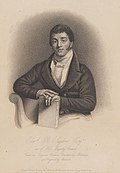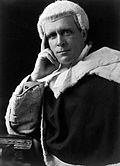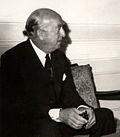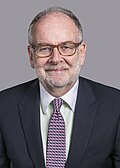Lord chancellors and lord keepers of England, 1050–1707
From the House of Wessex (1050) to the Commonwealth (1646)
| Lord Chancellor and/or Lord Keeper | Term of office | Monarch (reign) | ||
|---|---|---|---|---|
| Regenbald | 1050 | after 1066 | Edward the Confessor (r. 1042–1066) | |
| Harold II (r. 1066) | ||||
| William I (r. 1066–1087) | ||||
| Herfast | 1068 | 1070 | ||
| Saint Osmund, Count of Sées and Bishop of Salisbury | c. 1070 | c. 1078 | ||
| Maurice, Archdeacon of Le Mans | c. 1078 | c. 1085 | ||
| Gerard, Preceptor of Rouen, later Archbishop of York | c. 1085 | before 1091 | ||
| William II (r. 1087–1100) | ||||
| Robert Bloet | after January 1091 | 1094 | ||
| William Giffard | 1094 | April 1101 | ||
| Henry I (r. 1100–1135) | ||||
| Roger of Salisbury | 1101 | 1102 | Henry I (r. 1100–1135) | |
| Waldric | 1102 | 1107 | ||
| Ranulf | 1107 | 1123 | ||
| Geoffrey Rufus | 1123 | 1133 | ||
| Robert de Sigello [a] | 1133 | 1135 | ||
| Roger le Poer | 1135 | 1139 | Stephen (r. 1135–1154) | |
| Philip de Harcourt, Dean of Lincoln | 1139 | 1140 | ||
| Robert of Ghent, Dean of York | 1140 | 1141 | ||
| William FitzGilbert | 1141 | 1142 | ||
| Robert of Ghent, Dean of York | 1142 | 1154 | ||
| Thomas Becket, Archdeacon of Canterbury, later Archbishop of Canterbury | 1152 | 1162 | Henry II (r. 1154–1189) | |
| Geoffrey Ridel, Archdeacon of Canterbury | 1162 | 1173 | ||
| Ralph de Warneville, Treasurer of York | 1173 | 1181 | ||
| Geoffrey, the Bastard, Archbishop of York | 1181 | 1189 | ||
| William Longchamp, Bishop of Ely | 1189 | 1197 | Richard I  (r. 1189–1199) | |
| Eustace, Dean of Salisbury [a] | 1197 | 1199 | ||
| Eustace, Dean of Salisbury | 1198 | 1199 | ||
| Hubert Walter, Archbishop of Canterbury | 1199 | 1205 | John  (r. 1199–1216) | |
| Walter de Gray, at various times Bishop of Lichfield, Bishop of Worcester, Archbishop of York | 1205 | 1214 | ||
| Richard Marsh, later Bishop of Durham | 1214 | 1226 | ||
Henry III  (r. 1216–1272) | ||||
| Ralph Neville, Bishop of Chichester | 1226 | 1240 | ||
| Richard le Gras, Abbot of Evesham | 1240 | 1242 | ||
| Ralph Neville, Bishop of Chichester [a] | 1242 | 1244 | ||
| Silvester de Everdon, Archdeacon of Chester [a] | 1244 | 1246 | ||
| John Maunsell, Provost of Beverley [a] | 1246 | 1247 | ||
| John Lexington [a] | 1247 | 1248 | ||
| John Maunsell [a] | 1248 | 1249 | ||
| John Lexington [a] | 1249 | 1253 | ||
| Eleanor of Provence, [1] [b] Queen Consort and Regent of England [a] | 1253 | 1254 | ||
| William of Kilkenny [a] | 1254 | 1255 | ||
| Henry Wingham, from 1259/1260 Bishop of London | 5 January 1255 | 18 October 1260 | ||
| Nicholas of Ely, Archdeacon of Ely | 18 October 1260 | 12 July 1261 | ||
| Walter de Merton, Archdeacon of Bath | 12 July 1261 | 19 July 1263 | ||
| Nicholas of Ely, Archdeacon of Ely | 19 July 1263 | November 1263 | ||
| John Chishull, Archdeacon of London | November 1263 | 1264 | ||
| Thomas Cantilupe, Archdeacon of Stafford | 1264 | 21 February 1265 | ||
| Ralph Sandwich [a] | 21 February 1265 | 10 August 1265 | ||
| Walter Giffard, Bishop of Bath and Wells | 10 August 1265 | 1266 | ||
| Godfrey Giffard, Archdeacon of Wells | 1266 | 1268 | ||
| John Chishull, Dean of St Paul's | 30 October 1268 | 29 July 1269 | ||
| Richard Middleton, Archdeacon of Northumberland | 29 July 1269 | Before 29 November 1272 | ||
| Walter de Merton, Archdeacon of Bath | Before 29 November 1272 | 21 September 1274 | Edward I  (r. 1272–1307) | |
| Robert Burnell, Bishop of Bath | 21 September 1274 | 17 December 1292 | ||
| Thomas Bek, Archdeacon of Dorset [a] | 1279 | 1279 | ||
| John Langton, Canon of Lincoln | 17 December 1292 | 30 September 1302 | ||
| William Greenfield, Dean of Chichester | 30 September 1302 | 29 December 1304 | Edward I  (r. 1272–1307) | |
| William Hamilton, Dean of York | 29 December 1304 | 21 April 1307 | ||
| Ralph Baldock, Bishop of London | 21 April 1307 | 2 August 1307 | ||
Edward II  (r. 1307–1327) | ||||
| John Langton, Bishop of Chichester | 18 August 1307 | 6 July 1310 | ||
| Walter Reynolds, Bishop of Worcester | 6 July 1310 | 26 September 1314 | ||
| John Sandale, Canon of Lincoln | 26 September 1314 | 11 June 1318 | ||
| John Hotham, Bishop of Ely | 11 June 1318 | 26 January 1320 | ||
| John Salmon, Bishop of Norwich | 26 January 1320 | 20 August 1323 | ||
| Robert Baldock, Archdeacon of Middlesex | 20 August 1323 | 1326 | ||
| William Ayermin, Bishop of Norwich | 1326 | 1327 | ||
| John Hotham, Bishop of Ely | 26 January 1327 | 12 May 1328 | Edward III  (r. 1327–1377) | |
| Henry Burghersh, Bishop of Lincoln | 12 May 1328 | 28 November 1330 | ||
| John de Stratford, Bishop of Winchester | 28 November 1330 | 28 September 1334 | ||
| Richard Bury, Bishop of Durham | 28 September 1334 | 6 June 1335 | ||
| John de Stratford, Archbishop of Canterbury | 6 June 1335 | 24 March 1337 | ||
| Robert de Stratford, Bishop of Chichester | 24 March 1337 | 6 July 1338 | ||
| Richard Bintworth, Bishop of London | 6 July 1338 | 28 April 1339 | ||
| John de Stratford, Archbishop of Canterbury | 28 April 1340 | 20 June 1340 | ||
| Robert de Stratford, Bishop of Chichester | 20 June 1340 | 14 December 1340 | ||
| Robert Bourchier, Baron Bourchier | 14 December 1340 | 28 October 1341 | ||
| Robert Parning | 28 October 1341 | 29 September 1343 | ||
| Robert Sadington | 29 September 1343 | 26 October 1345 | ||
| John de Ufford, Dean of Lincoln | 26 October 1345 | 16 June 1349 | ||
| John Thoresby, Bishop of Worcester | 16 June 1349 | 27 November 1356 | ||
| William Edington, Bishop of Winchester | 27 November 1356 | 19 February 1363 | ||
| Simon Langham, Bishop of Ely | 19 February 1363 | Before 17 September 1367 | ||
| William of Wykeham, Bishop of Winchester | Before 17 September 1367 | 26 March 1371 | ||
| Robert Thorpe | 26 March 1371 | 5 July 1372 | ||
| John Knyvet | 5 July 1372 | 11 January 1377 | ||
| Adam Houghton, Bishop of St David's | 11 January 1377 | 26 June 1378 | Richard II  (r. 1377–1399) | |
| Richard Scrope, Baron Scrope of Bolton | 29 October 1378 | 30 January 1380 | ||
| Simon Sudbury, Archbishop of Canterbury | 30 January 1380 | 10 August 1381 | ||
| Hugh Segrave [a] | 1381 | 1381 | ||
| William Courtenay, Bishop of London | 10 August 1381 | 4 December 1381 | ||
| Richard Scrope, Baron Scrope of Bolton | 4 December 1381 | 9 September 1382 | ||
| Robert Braybrooke, Bishop of London | 9 September 1382 | 13 March 1383 | ||
| Michael de la Pole, Baron de la Pole (later Earl of Suffolk) | 13 March 1383 | 24 October 1386 | ||
 | Thomas Arundel, Bishop of Ely | 24 October 1386 | 4 May 1389 | |
| William of Wykeham, Bishop of Winchester | 4 May 1389 | 27 September 1391 | ||
 | Thomas Arundel, Archbishop of York | 27 September 1391 | 15 November 1396 | |
| Edmund Stafford, Bishop of Exeter | 15 November 1396 | 5 September 1399 | ||
 | Thomas Arundel, Archbishop of Canterbury | 5 September 1399 | 1399 | |
| John Scarle, Archdeacon of Lincoln | 1399 | 9 March 1401 | Henry IV  (r. 1399–1413) | |
 | Edmund Stafford, Bishop of Exeter | 9 March 1401 | 26 February–1 March 1403 | |
 | Henry Beaufort, Bishop of Lincoln | 26 February–1 March 1403 | c. 28 February 1405 | |
| Thomas Langley, Dean of York | c. 28 February 1405 | 30 January 1407 | ||
 | Thomas Arundel, Archbishop of Canterbury | 30 January 1407 | 31 January 1410 | |
| Sir Thomas Beaufort | 31 January 1410 | 5 January 1412 | ||
| Thomas Arundel, Archbishop of Canterbury | 5 January 1412 | 21 March 1413 | ||
 | Henry Beaufort, Bishop of Winchester | 21 March 1413 | 23 July 1417 | Henry V  (r. 1413–1422) |
| Thomas Langley, Bishop of Durham | 23 July 1417 | 6 July 1424 [c] | ||
Henry VI  (r. 1422–1461) | ||||
 | Henry Beaufort, Bishop of Winchester | 6 July 1424 | 16 March 1426 | |
 | John Kemp, Archbishop of York | 16 March 1426 | 4 March 1432 | |
| John Stafford, Bishop of Bath (later Archbishop of Canterbury) | 4 March 1432 | 31 January 1450 | ||
 | John Kemp, Archbishop of York | 31 January 1450 | 2 April 1454 | |
 | Richard Neville, Earl of Salisbury | 2 April 1454 | 7 March 1455 | |
 | Thomas Bourchier, Archbishop of Canterbury | 7 March 1455 | 11 October 1456 | |
 | William Waynflete, Bishop of Winchester | 11 October 1456 | 25 July 1460 | |
| George Neville, Bishop of Exeter | 25 July 1460 | 20 June 1467 [d] | ||
Edward IV  (r. 1461–1470) | ||||
| Robert Stillington, Bishop of Bath | 20 June 1467 | 29 September 1470 | ||
| George Neville, Archbishop of York | 29 September 1470 | 1471 | Henry VI  (r. 1470–1471) | |
| Robert Stillington, Bishop of Bath | 1471 | 27 July 1473 | Edward IV  (r. 1471–1483) | |
| Laurence Booth, Bishop of Durham | 27 July 1473 | Before 28 May 1474 | ||
 | John Alcock, Bishop of Rochester [a] | 10 June 1475 | 28 September 1475 | |
 | Thomas Rotheram, Bishop of Lincoln | Before 28 May 1475 | 9 April–13 May 1483 | |
| John Russell, Bishop of Lincoln | 9 April–13 May 1483 | 18 September 1485 [e] | Richard III  (r. 1483–1485) | |
 | Thomas Rotheram, Archbishop of York | 18 September 1485 | 7 October 1485 | Henry VII  (r. 1485–1509) |
 | John Alcock, Bishop of Worcester | 7 October 1485 | 6 March 1487 | |
 | John Morton, Cardinal Archbishop of Canterbury | 6 March 1487 | 21 January 1504 | |
| Henry Deane, Archbishop of Canterbury [a] | 13 October 1500 | 27 July 1502 | Henry VII  (r. 1485–1509) | |
 | William Warham, Archbishop of Canterbury [a] | 21 January 1502 [f] | 24 December 1515 | |
Henry VIII  (r. 1509–1547) | ||||
 | Thomas Wolsey, Cardinal Archbishop of York | 24 December 1515 | 26 October 1529 | |
 | Thomas More [g] | 26 October 1529 | 16 May 1532 | |
 | Thomas Audley (Baron Audley of Walden from 1538) [g] | 26 January 1533 [h] | 3 May 1544 | |
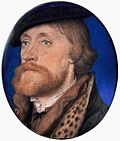 | Thomas Wriothesley, 1st Baron Wriothesley | 3 May 1544 [i] | 1547 | |
Edward VI  (r. 1547–1553) | ||||
 | William Paulet, Baron St John Keeper | 1547 | 23 October 1547 | |
 | Richard Rich, 1st Baron Rich [g] | 23 October 1547 | 19 January 1552 | |
 | Thomas Goodrich, Bishop of Ely | 19 January 1552 | 23 August 1553 | |
 | Stephen Gardiner, Bishop of Winchester | 23 August 1553 | 14 November 1555 | Mary I  (r. 1553–1558) |
 | Nicholas Heath, Archbishop of York | 14 November 1555 | 18 November 1558 | |
| With the queen | 18 November 1558 | 22 December 1558 | Elizabeth I  (r. 1558–1603) | |
 | Nicholas Bacon, Lord Keeper | 22 December 1558 | 20 February 1579 | |
| With the queen | 20 February 1579 | 26 April 1579 | ||
 | Thomas Bromley | 26 April 1579 | 29 April 1587 | |
 | Christopher Hatton | 29 April 1587 | 22 November 1591 | |
 | In commission:
| 22 November 1591 | 28 May 1592 | |
 | John Puckering, Lord Keeper [g] | 28 May 1592 | 6 May 1596 | |
 | Sir Thomas Egerton, Lord Keeper to 19 July 1603 (Lord Ellesmere from 1603; Viscount Brackley from 1616) | 6 May 1596 | 5 March 1617 | |
James I  (r. 1603–1625) | ||||
 | Francis Bacon, Lord Keeper to 1618 (Lord Verulam from 1618 Viscount St Alban from 1621) | 7 March 1617 | 1 May 1621 | |
 | In commission:
| 1 May 1621 | 16 July 1621 | |
 | John Williams, Bishop of Lincoln, Lord Keeper | 16 July 1621 | 1 November 1625 | |
Charles I  (r. 1625–1649) | ||||
 | Thomas Coventry, Lord Keeper (Lord Coventry from 1628) | 1625 | 1640 | |
 | John Finch, Baron Finch, Lord Keeper [g] | 1640 | 1641 | |
 | Edward Littleton, 1st Baron Lyttelton, Lord Keeper (Took Great Seal to the King in 1642) | 1641 | 1645 | |
| Richard Lane, Lord Keeper | 1645 | 1650 | ||
Charles II  Court in exile from 1649 | ||||
| Vacant | 1650 | 1653 | ||
| Edward Herbert, Lord Keeper | 1653 | 1654 | ||
The Great Seal was captured and destroyed by Parliament on 11 August 1646.
Commissioners of Parliament's Great Seal 1643–1660
| Name [2] | Term |
|---|---|
In commission:
| Nov 1643 – Oct 1646 |
In commission:
| 1646–1648 |
| In commission: | 1648–1649 |
| In commission: | 1649–1654 |
| In commission: | 1654–1656 |
| In commission: | 1656–1659 |
| In commission: | January–June 1659 |
| In commission: | June 1659 – 1660 |
| In commission: | 1660–1660 |
From the Restoration (1660) to the Act of Union (1707)
| Lord Chancellor and Lord Keeper | Term of office | Other peerage(s) | Monarch (reign) | ||
|---|---|---|---|---|---|
 | Edward Hyde | 13 January 1658 | 30 August 1667 | Baron Hyde in 1660 Earl of Clarendon in 1661 | Charles II  (r. 1660–1685) |
 | Orlando Bridgeman [j] | 31 August 1667 | 17 November 1672 | — | |
 | Anthony Ashley Cooper 1st Earl of Shaftesbury | 17 November 1672 | 9 November 1673 | ||
 | Heneage Finch Baron Finch (Lord Keeper until 1675) | 9 November 1673 | 18 December 1682† | Earl of Nottingham from 12 May 1681 | |
 | Francis North [j] | 20 December 1682 | 5 September 1685† | Baron Guilford in 1683 | |
James II  (r. 1685–1688) | |||||
 | George Jeffreys 1st Baron Jeffreys | 28 September 1685 | December 1688 | — | |
 | In commission: | 4 March 1689 | 14 May 1690 | — | Mary II  (r. 1689–1694) & William III  (r. 1689–1702) |
 | In commission: | 14 May 1690 | 22 March 1693 | — | |
 | John Somers (Lord Keeper until 1697) | 23 March 1693 | 27 April 1700 | Baron Somers from 1697 | |
 | In commission: | 27 April 1700 | 31 May 1700 | — | |
 | Nathan Wright [j] | 31 May 1700 | 11 October 1705 | — | |
Anne  (r. 1702–1714) | |||||
 | William Cowper [j] | 11 October 1705 | 4 May 1707 | Baron Cowper in 1706 | |




